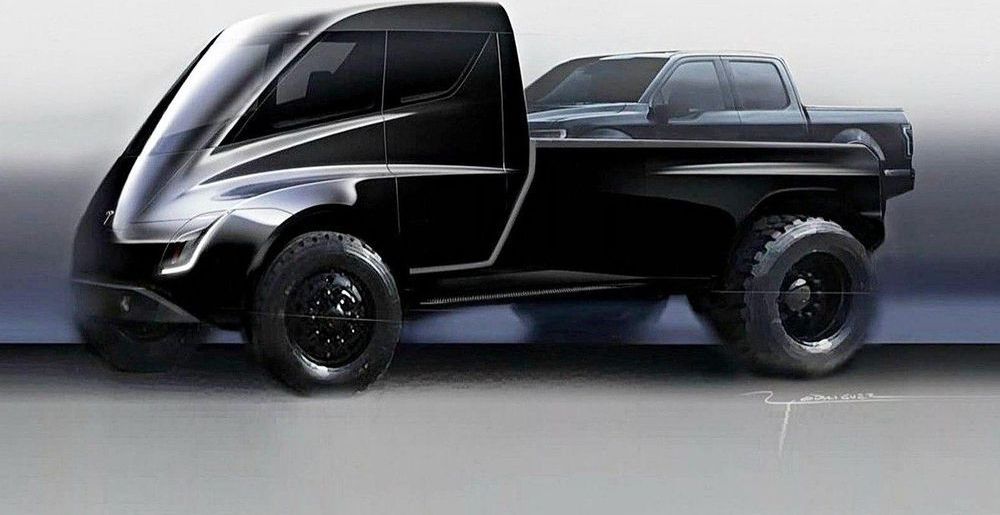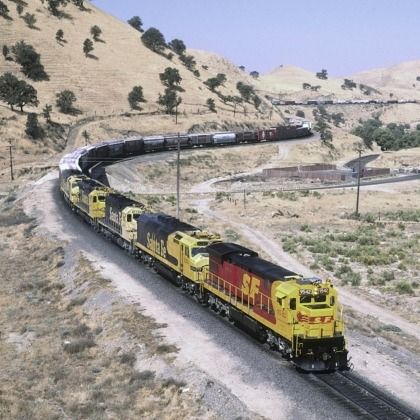The video uploaded by Logan LeGrand today shows a modified 2019 Toyota Corolla hatchback easily maintaining its 40 mph speed throughout a heavy downpour.
Category: transportation – Page 461


Freight-train earthquake detectors, ion-trap quantum computers and the “dude wall” problem
If you’ve ever been wakened by the roar of a freight train – or waited at a level crossing for one to trundle by – you’ll be glad to know that these noisy vehicles have a new and potentially life-saving purpose: predicting earthquakes. As Hamish Johnston explains on this week’s podcast, freight trains generate surprisingly strong seismic waves, and changes in the velocity of these waves is an early sign of hazardous earthquake activity. Researchers in France, Belgium and the US studied the rumblings of freight trains running through California’s Coachella Valley and found that they could, in principle, be used to monitor the nearby San Jacinto fault.
Next on the podcast is Chris Monroe, an atomic physicist and quantum technologist whose start-up firm, Ion Q, is developing a quantum computer that uses trapped ions as qubits. In an interview with Physics World’s industry editor Margaret Harris, Monroe explains how Ion Q’s technology differs from classical computers, and describes how trapped ions execute quantum gates.
The third segment of the podcast focuses on the persistent lack of diversity in physics. In an interview, Jess Wade, a physicist at Imperial College London, discusses the scientific impact of this poor diversity and suggests ways to make the field more welcoming to members of underrepresented groups. Afterwards, our features editor Sarah Tesh, who commissioned Wade and Maryam Zarainghalam to write about this topic in the August issue of Physics World, talks about the portraits of white male scientists that adorn walls in many physics departments. These so-called “dude walls” honour important historical figures, but they also send out subtle signals about what a “great” physicist looks like.
The Teen With The Bionic Arms | SHAKE MY BEAUTY
SUBSCRIBE to Barcroft TV: http://bit.ly/Oc61Hj
A DETERMINED TEENAGER with bionic arms champions diversity by showing the world it’s ‘cool to be different.’ Tilly Lockey, from County Durham, UK had both her arms amputated at 15 months old after contracting Group B meningococcal septicaemia. The 13-year-old was the first teenager in Britain to receive a pair of the 3D-printed bionic arms in 2016. Constantly in demand for her modelling work, Tilly extensively travels the world raising awareness for meningitis — the condition which almost took her life as a baby. Follow her story here:
https://www.instagram.com/tilly.lockey/
https://www.youtube.com/channel/UC5hrVolbwN8XsWbNTRpoIMA
Barcroft TV would like to thank Debbie Todd for her photography in this video: https://www.instagram.com/debbietoddphotographer
Video Credits:
Videographer / director: Ian Paine
Producer: Gareth Shoulder, Ruby Coote
Editor: Ciara Cecil
Click here to follow your favourite Barcroft shows on Instagram!
Barcroft TV — https://www.instagram.com/barcroft_tv/
Born Different — https://www.instagram.com/borndifferentshow/
Shake My Beauty — https://www.instagram.com/shakemybeauty/
Hooked On The Look — https://www.instagram.com/hookedonthelookshow/
Beast Buddies — https://www.instagram.com/beastbuddiesshow/
Ridiculous Rides — https://www.instagram.com/ridiculousridesshow/
Snapped In The Wild — https://www.instagram.com/snappedinthewild/
Dog Dynasty — https://www.instagram.com/dogdynastyshow/
For more amazing content, click here!

BMW Unveils a Car Coated in Vantablack
Vantablack is a coating so black, anything covered in it appears to disappear, replaced by the blackest of black voids.
Now, the company behind the coating, Surrey NanoSystems, has teamed up with BMW to see what it looks like when you paint a vehicle with Vantablack — and it’s about as trippy as you’d expect.
Startup offers ~$9,000 electric retrofits with Tesla batteries for fossil fuel-powered cars
A French startup is trying to streamline electric conversion with Tesla batteries in order to offer a relatively cheap way to convert older fossil fuel-powered cars.
Therefs nothing new about electric conversions, but they are often really complicated, which also makes them really expensive.
It most often cost tens of thousands of dollars, and thatfs why most electric conversions today are done on classic cars or to create drag-strip monsters.
Tesla patents way to join solar roof tiles together for faster installation
Tesla is planning to ramp up installation of its new solar roof, but it needs to figure out a way to reduce installation time.
Now a new patent shows a possible solution by producing and installing solar roof tiles in jointed groups.
At Tesla’s 2019 shareholder’s meeting earlier this year, CEO Elon Musk said Tesla was still working on longevity testing for the new version of its solar roof tiles, Solar Roof V3, and that they are now installing the solar product in 8 states.
Kilopower: NASA’s Offworld Nuclear Reactor
General Motors is the latest automaker reported to be working on solid-state lithium batteries, thanks to a $2 million grant from Uncle Sam.
The money is part of a larger grant to develop more fuel-efficient powertrains, CNET reported. The company is expected to use the rest of the money to develop a lighter-weight, more efficient engine for medium duty trucks, perhaps to replace the company’s 6.2-liter V-8.
Solid-state lithium batteries replace the flammable liquid organic solvents such as ethylene carbonate as an electrolyte in conventional lithium batteries with a solid, ceramic electrolyte that isn’t flammable. That allows engineers to cram more lithium atoms into the battery to give it more energy without increasing volatility, which could lead to lighter, batteries for electric cars with longer ranges.

To Hunt Gravitational Waves, Scientists Had to Create the Quietest Spot on Earth
LIVINGSTON, La. — About a mile and a half from a building so big you can see it from space, every car on the road slows to a crawl. Drivers know to take the 10 mph (16 km/h) speed limit very seriously: That’s because the building houses a massive detector that’s hunting for celestial vibrations at the smallest scale ever attempted. Not surprisingly, it’s sensitive to all earthly vibrations around it, from the rumblings of a passing car to natural disasters on the other side of the globe.
As a result, scientists who work at one of the LIGO (Laser Interferometer Gravitational-Wave Observatory) detectors must go to extraordinary lengths to hunt down and remove all potential sources of noise — slowing down traffic around the detector, monitoring every tiny tremor in the ground, even suspending the equipment from a quadruple pendulum system that minimizes vibrations — all in the effort to create the most “silent” vibrational spot on Earth.

New Electric Aircraft Motor Lab Aims For 1MW Electric Airplane Motor
You know a new industry is born when investments pour in and results encourage more spending. Now, a new lab, the Collins Electric Aircraft Lab, wants to offer urban air mobility (UAM) and the general electric aviation world a 1MW electric airplane motor.